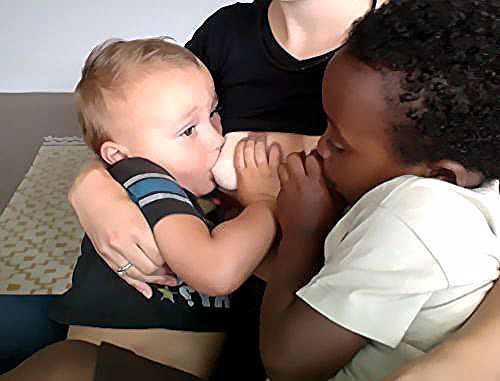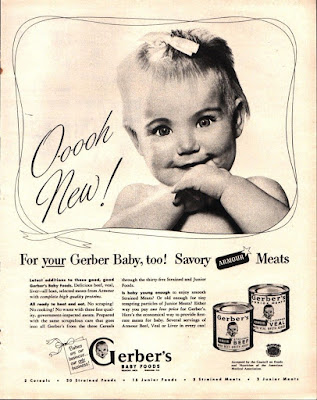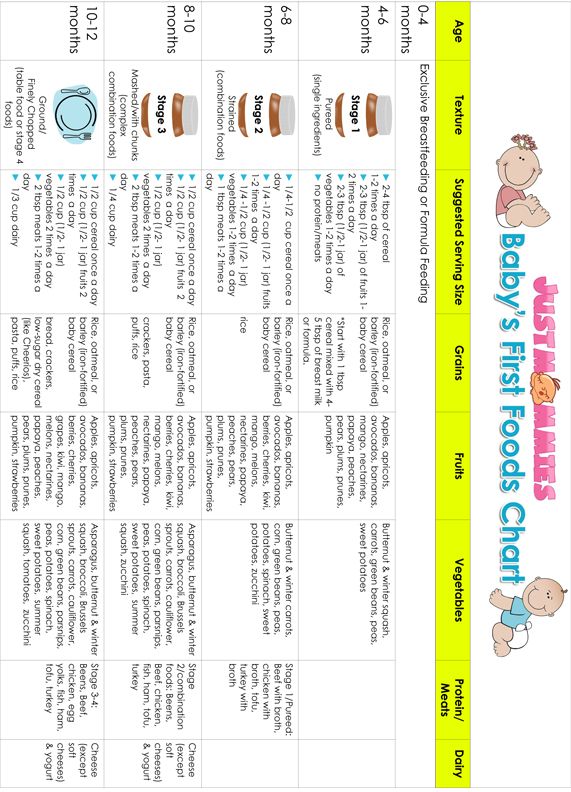New baby breast feeding
Breastfeeding FAQs: How Much and How Often (for Parents)
Breastfeeding is a natural thing to do, but it still comes with its fair share of questions. Here's what you need to know about how often and how long to breastfeed your baby.
How Often Should I Breastfeed?
Newborn babies should breastfeed 8–12 times per day for about the first month. Breast milk is easily digested, so newborns are hungry often. Frequent feedings helps stimulate your milk production during the first few weeks.
By the time your baby is 1–2 months old, he or she probably will nurse 7–9 times a day.
In the first few weeks of life, breastfeeding should be "on demand" (when your baby is hungry), which is about every 1-1/2 to 3 hours. As newborns get older, they'll nurse less often, and may have a more predictable schedule. Some might feed every 90 minutes, whereas others might go 2–3 hours between feedings.
Newborns should not go more than about 4 hours without feeding, even overnight.
How Do I Count the Time Between Feedings?
Count the length of time between feedings from the time your baby begins to nurse (rather than at the end) to when your little one starts nursing again. In other words, when your doctor asks how often your baby is feeding, you can say "about every 2 hours" if your first feeding started at 6 a.m., the next feeding was around 8 a.m., then 10 a.m., and so on.
Especially at first, you might feel like you're nursing around the clock, which is normal. Soon enough, your baby will go longer between feedings.
How Long Does Nursing Take?
Newborns may nurse for up to 20 minutes or longer on one or both breasts. As babies get older and more skilled at breastfeeding, they may take about 5–10 minutes on each side.
How long it takes to breastfeed depends on you, your baby, and other things, such as whether:
- your milk supply has come in (this usually happens 2–5 days after birth)
- your let-down reflex (which causes milk to flow from the nipple) happens right away or after a few minutes into a feeding
- your milk flow is slow or fast
- the baby has a good latch, taking in as much as possible of your areola (the dark circle of skin around your nipple)
- your baby begins gulping right away or takes it slow
- your baby is sleepy or distracted
Call your doctor if you're worried that your baby's feedings seem too short or too long.
When Should I Alternate Breasts?
Alternate breasts and try to give each one the same amount of nursing time throughout the day. This helps to keep up your milk supply in both breasts and prevents painful engorgement (when your breasts overfill with milk).
You may switch breasts in the middle of each feeding and then alternate which breast you offer first for each feeding. Can't remember where your baby last nursed? It can help to attach a reminder — like a safety pin or small ribbon — to your bra strap so you'll know which breast your baby last nursed on. Then, start with that breast at the next feeding. Or, keep a notebook handy or use a breastfeeding app to keep track of how your baby feeds.
Your baby may like switching breasts at each feeding or prefer to nurse just on one side. If so, then offer the other breast at the next feeding. Do whatever works best and is the most comfortable for you and your baby.
How Often Should I Burp My Baby During Feedings?
After your baby finishes on one side, try burping before switching breasts. Sometimes, the movement alone can be enough to cause a baby to burp.
Sometimes, the movement alone can be enough to cause a baby to burp.
Some infants need more burping, others less, and it can vary from feeding to feeding.
If your baby spits up a lot, try burping more often. While it's normal for infants to "spit up" a small amount after eating or during burping, a baby should not vomit after feeding. If your baby throws up all or most of a feeding, there could be a problem that needs medical care. If you're worried that your baby is spitting up too much, call your doctor.
Why Is My Baby Hungrier Than Usual?
When babies go through a period of rapid growth (called a growth spurt), they want to eat more than usual. These can happen at any time. But in the early months, growth spurts often happen when a baby is:
- 7–14 days old
- 2 months old
- 4 months old
- 6 months old
During these times and whenever your baby seems extra hungry, follow your little one's hunger cues. You may need to breastfeed more often for a while.
How Long Should I Breastfeed My Baby?
That's a personal choice. Experts recommend that babies be breastfed exclusively (without formula, water, juice, non–breast milk, or food) for the first 6 months. Then, breastfeeding can continue until 12 months (and beyond) if it's working for you and your baby.
Breastfeeding has many benefits for mom and baby both. Studies show that breastfeeding can lessen a baby's chances of diarrhea, ear infections, and bacterial meningitis, or make symptoms less severe. Breastfeeding also may protect children from sudden infant death syndrome (SIDS), diabetes, obesity, and asthma.
For moms, breastfeeding burns calories and helps shrink the uterus. In fact, breastfeeding moms might return to their pre–pregnancy shape and weight quicker. Breastfeeding also helps lower a woman's risk of diseases like:
- breast cancer
- high blood pressure
- diabetes
- heart disease
It also might help protect moms from uterine cancer and ovarian cancer.
Breastfeeding your newborn | What to expect the first week
The first week with your baby is exciting but can also be daunting – particularly if you’ve never breastfed before. Read our breastfeeding advice to help you get off to the best possible start.
Share this content
How do I know when to feed my baby?
After giving birth life can seem pretty bewildering – you’re getting to know your newborn while recovering from the delivery. Your emotions might be all over the place (especially between days two and five when many women get the double whammy of their milk ‘coming in’1 and the ‘baby blues’.2 Plus, there’s often expectation – and pressure – to be up and about quickly and generally be a supermum. But one of the most super things you can do this week is just be with your baby and get breastfeeding on track.
When should I start breastfeeding my newborn?
It’s best to try to breastfeed your baby in the first hour after birth. By latching on and sucking rhythmically, he begins switching on the cells in your breasts to initiate your milk supply.1 It isn’t known as the ‘magic hour’ for nothing!
By latching on and sucking rhythmically, he begins switching on the cells in your breasts to initiate your milk supply.1 It isn’t known as the ‘magic hour’ for nothing!
“Ideally, your baby will be put on your chest as soon as he’s born to give him access to the breast. He might feed, he might not; but give him the opportunity to do so,” says Cathy Garbin, an internationally renowned lactation consultant.
“Support his body and let him attempt to find his way to your breast and self-attach (you can watch videos of this process, called the ‘breast crawl’, online). However, if your baby doesn’t attach, healthcare professionals are usually very skilled at helping mums with positioning. Baby-led attachment, with mum in a semi-reclined breastfeeding position, is a good way to start.”
So forget about weighing and dressing your baby in that special first hour, or at least until after the first breastfeed. Enjoy relaxed cuddles and plenty of naked skin-to-skin contact with him. This will get oxytocin – ‘the love hormone’ – flowing in both of you, which is essential for the release of your first milk, colostrum.3
This will get oxytocin – ‘the love hormone’ – flowing in both of you, which is essential for the release of your first milk, colostrum.3
“As soon as they were sure our son was healthy, the midwives gave us time as a family – just me, my husband and our new baby – to get to know each other. It was messy, emotional and utterly blissful, and he fed twice in that special hour together,” remembers Ellie, mum of two, UK.
And did you know that as he breastfeeds, your baby is helping you recover from the birth? This is because oxytocin also makes your uterus contract. In the first hours after the birth this helps to expel your placenta naturally and reduces blood loss.4
What if the birth doesn’t go to plan?
If you have a c-section or there are other complications, you may still be able to have skin-to-skin time with your baby and breastfeed in the first few hours.
“If you aren’t able to hold your baby, the next best thing is for him to have skin-to-skin contact with your partner instead.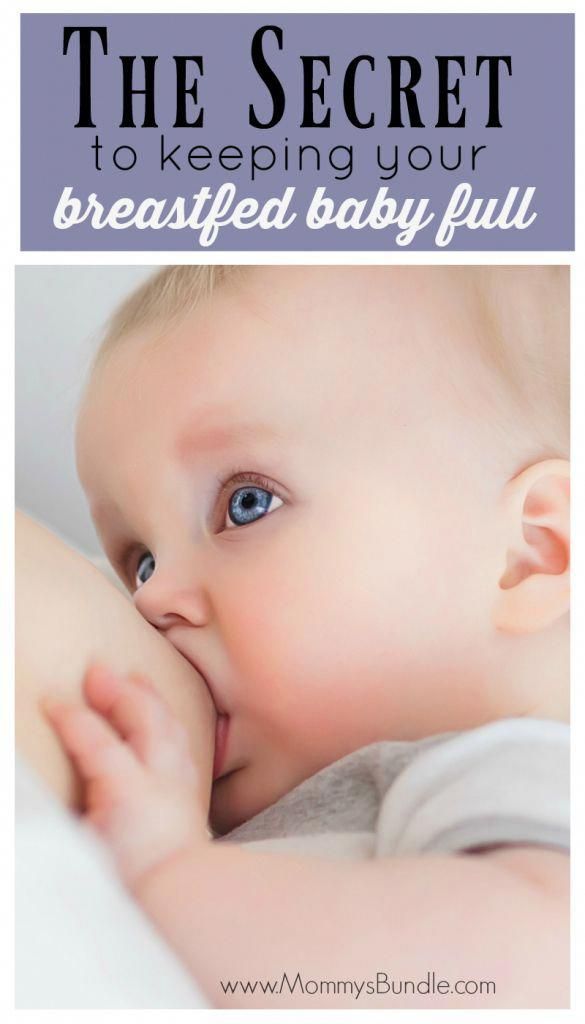 This will help keep your baby feeling safe, loved and warm until you’re ready,” says Cathy.
This will help keep your baby feeling safe, loved and warm until you’re ready,” says Cathy.
If your baby is unable to breastfeed, then it’s a good idea to start expressing your milk early and frequently until he is able. “While breastfeeding directly as soon as possible gives mum and baby a good start, it’s not essential,” reassures Cathy. “What’s more important is to initiate your milk supply so you can work towards breastfeeding later if needed.”
You can hand express and use the hospital breast pump to help initiate your milk supply in the beginning.5 The precious colostrum you collect can then be given to your baby. This is especially important if he is premature or poorly, because your breast milk has so many wonderful health benefits.
Don’t feel like breastfeeding is unachievable if your baby arrives early or has medical complications that stop him feeding at the start, either. “I’ve worked with many, many mums where their baby hasn’t breastfed directly from the breast at all in the first six weeks due to a premature arrival or other difficulties, and they’ve gone on to breastfeed successfully,” says Cathy.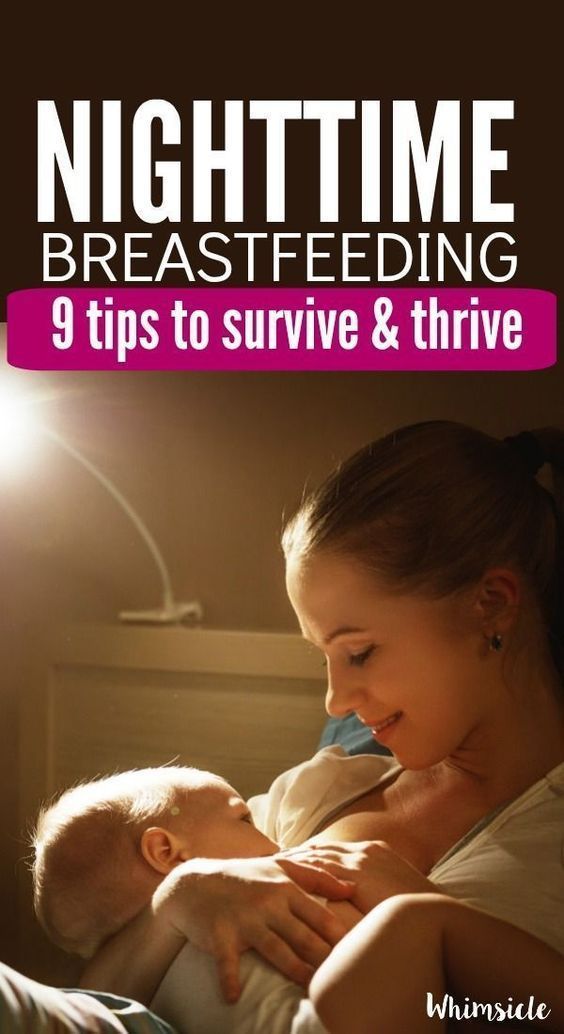
Is my baby latching on correctly?
Good attachment is crucial for getting breastfeeding off to a good start,6 as your baby’s latch affects how well he drinks the milk and consequently how he grows and develops. A poor latch can cause sore or damaged nipples, so never worry about asking a healthcare professional to check your attachment, even if you’ve been told the latch is fine and you don’t notice an obvious problem – especially while you’re still at your birth facility.
“Every time I fed in hospital, I buzzed a midwife to check the latch,” says Emma, mum of two, Australia. “There were a few times I thought I had it right but it was painful and the midwife helped take my baby off and do it properly. It meant I had the confidence to do that at home.”
When your baby is latching on, aim your nipple towards the roof of his mouth. This way he will latch on to the nipple, as well as some of the areola beneath it. This means he can draw both the nipple and some breast tissue into his mouth and feed well. 6
6
“The latch should feel pretty comfortable and like a tugging sensation rather than a pain,” says Cathy. “Your baby will have his mouth wide open. His bottom lip may be flanged outwards, but his top lip will rest comfortably on your breast. His body language will show he is comfortable. There’s not going to be a large volume of milk at this early stage, so you won’t see much swallowing, although your baby will be sucking a lot and feeding lots of times.”
How often should a newborn feed?
Breastfeeding frequency and duration can vary a lot in the first week. “The first 24 hours differ considerably from baby to baby. Some babies have a long sleep – birth is tiring! – and some feed frequently,” says Cathy. “This variability is one of the most confusing things for new mums. Everyone gives you different advice, so it’s important to remember each mother and baby are individuals.
“Colostrum is thicker than mature breast milk and produced in smaller amounts, but it’s packed with goodness. Drinking your colostrum gives your baby practice at sucking, swallowing and breathing before your milk comes in in greater quantities,” Cathy explains.
Drinking your colostrum gives your baby practice at sucking, swallowing and breathing before your milk comes in in greater quantities,” Cathy explains.
By the time your milk comes in, around days two to four, your baby will probably be nursing eight to 12 times every 24 hours (sometimes more!), including during the night.7 These early feeds can take anywhere from 10 to 15 minutes to 45 minutes to an hour, as your baby is still developing the muscles and coordination he needs to suck efficiently.
“It’s very intense at first – often more intense than you imagined it would be – and that’s what shocks most new mums,” says Cathy. “They can hardly have time to get to the loo, have a shower, get a bite to eat. It’s common to find that a surprise.”
This is something Camilla, mum of one, Australia, experienced: “That first week Frankie fed every two hours, day and night, for between half an hour to an hour at a time,” she says. “My partner and I were both permanently exhausted!”
Do I need a newborn feeding schedule?
The good news is that this frequent feeding helps initiate and build your milk supply. 7 So the more your baby feeds, the more milk you’ll make. Therefore you shouldn’t worry about planning a newborn feeding schedule as this may reduce his opportunities to feed. Just concentrate on breastfeeding when your baby gives you hunger cues,8 such as:
7 So the more your baby feeds, the more milk you’ll make. Therefore you shouldn’t worry about planning a newborn feeding schedule as this may reduce his opportunities to feed. Just concentrate on breastfeeding when your baby gives you hunger cues,8 such as:
- stirring from his sleep
- opening his eyes
- turning his head when he feels something on his cheek
- poking his tongue out
- making cooing noises
- sucking his lips
- trying to eat his hand
- getting grizzly
- starting to whine
- crying
Crying is a late sign of hunger, so if in doubt offer your baby your breast. It can be harder to breastfeed your baby once he has started crying, especially at this early stage when you’re both still learning. As he gets older, he’s likely to feed faster and less often, so breastfeeding should start to feel more manageable.
Will breastfeeding hurt?
You might have been told breastfeeding shouldn’t hurt but, in reality, many mums find the first few days uncomfortable. It’s not surprising when you consider your nipples aren’t used to all that strong, frequent sucking your baby is doing.
It’s not surprising when you consider your nipples aren’t used to all that strong, frequent sucking your baby is doing.
“The first couple of days can be uncomfortable as your body and baby get used to breastfeeding. If your baby stays on the breast too long and isn’t attached well, the effect is like wearing a pair of stiff, new shoes,” says Cathy. “Just as you can damage your feet, you can damage your nipples. Preventing damage is better than having to treat it, so see a lactation consultant or breastfeeding specialist if pain continues after the first few days.”
Mariah, mum of one, Canada, agrees: “Though my son’s latch appeared good, he was doing damage while feeding and everything hurt. It turned out a tongue-tie was the culprit, and we received amazing support from our city breastfeeding clinic to diagnose and rectify this.”
You may also feel period-like cramps (known as afterpains) following feeding sessions in the first few days, especially if this isn’t your first baby. This is because the oxytocin released by breastfeeding will help your womb contract further, as it starts to return to its usual size.4
This is because the oxytocin released by breastfeeding will help your womb contract further, as it starts to return to its usual size.4
When your milk comes in, it’s usual for breasts to feel full, firm, and certainly bigger than they used to be. Some women find their breasts get very swollen, hard and tender – a condition called engorgement.10 Feeding your baby frequently should help relieve the pressure. Read What is breast engorgement? for more self-care tips.
How often will my newborn poo and wee?
What goes in must come out! Colostrum acts like a laxative that encourages your baby do his first poo, called meconium. This can be a bit startling as it’s black and sticky like tar.11 But don’t worry, his nappies won’t always be like this – in fact, breastfed babies’ poo usually has an inoffensive, slightly sweet smell.
Here’s how many dirty nappies you can expect and when, and what their contents should look like:
Day one
- Number: one or more
- Colour: greenish black
- Texture: sticky and tar-like
Day two
- Number: two or more
- Colour: dark greenish brown
- Texture: becoming less sticky
Day three
- Number: two or more
- Colour: greenish brown to brownish yellow
- Texture: no longer sticky
Day four to one month
- Number: two or more
- Colour: yellow (they must be yellow by the end of day four at the latest)
- Texture: seedy (like English or American mustard with a little wholegrain mixed in).
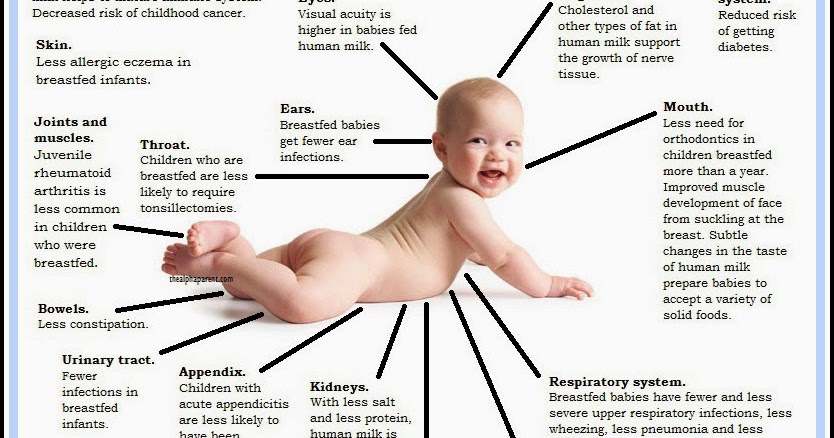 Loose and watery.
Loose and watery.
When it comes to your baby’s wee, it should be pale yellow. An average newborn has one wee for each day of his life… until about day three, when he should have about three wet nappies daily, and from day five, five or more wet nappies daily. You should also notice these nappies getting heavier over the first few days.11
Is my baby getting enough breast milk?
Because you only produce small amounts of milk at first, you might worry it won’t satisfy your newborn. But if you’re feeding on demand, you should be producing what your baby needs. If you want to keep track, check the number of dirty and wet nappies he’s producing, as shown above. If he isn’t following this pattern, seek medical advice.
“In the first three or four weeks, most babies just feed and sleep. If your baby isn’t settled and wants to feed all the time, think about seeing a healthcare professional,” says Cathy.
Your baby might bring up milk-coloured vomit after a feed, and this isn’t a cause for concern.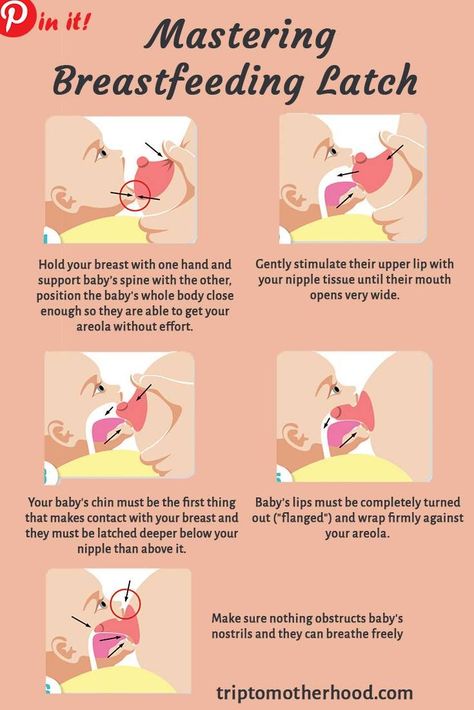 However, if his vomit has orange, red, green, brown or black in it, or he is projectile vomiting, see a healthcare professional. The same applies if your baby has a high temperature, blood in his poo, a sunken fontanelle (the soft spot on his head), or is not back to his birth weight by two weeks of age.11
However, if his vomit has orange, red, green, brown or black in it, or he is projectile vomiting, see a healthcare professional. The same applies if your baby has a high temperature, blood in his poo, a sunken fontanelle (the soft spot on his head), or is not back to his birth weight by two weeks of age.11
But if he doesn’t have any of these signs and is meeting his growth targets, he’s getting enough milk. You’ll both soon get used to breastfeeding and settle down into a more regular pattern.
Read about the next step of your breastfeeding journey in Breastfeeding the first month: What to expect.
References
1 Pang WW, Hartmann PE. Initiation of human lactation: secretory differentiation and secretory activation. J Mammary Gland Biol Neoplasia. 2007;12(4):211-221.
2 Shashi R et al. Postpartum psychiatric disorders: Early diagnosis and management. Indian J Psychiatry. 2015; 57(Suppl 2):S216–S221.
3 Moberg KU, Prime DK. Oxytocin effects in mothers and infants during breastfeeding. Infant. 2013;9(6):201-206.
Infant. 2013;9(6):201-206.
4 Sobhy SI, Mohame NA. The effect of early initiation of breast feeding on the amount of vaginal blood loss during the fourth stage of labor. J Egypt Public Health Assoc. 2004;79(1-2):1-12.
5 Meier PP et al. Which breast pump for which mother: an evidence-based approach to individualizing breast pump technology. J Perinatol. 2016;36(7):493.
6 Cadwell K. Latching‐On and Suckling of the Healthy Term Neonate: Breastfeeding Assessment. J Midwifery & Women’s Health. 2007;52(6):638-642.
7 Kent JC et al. Principles for maintaining or increasing breast milk production. J Obstet, Gynecol, & Neonatal Nurs. 2012;41(1):114-121.
8 Australian Breastfeeding Association [Internet]. Feeding cues; 2017 Sep [cited 2018 Feb].
9 Jacobs A et al. S3-guidelines for the treatment of inflammatory breast disease during the lactation period. Geburtshilfe Frauenheilkd. 2013;73(12):1202-1208.
10 Lawrence RA, Lawrence RM. Breastfeeding: A guide for the medical profession; 2011. 1114 p.
1114 p.
Breastfeeding a newborn | What to Expect in the First Week
The first week of a baby's life is a wonderful but hectic time, especially if you haven't breastfed before. Our breastfeeding tips will help you settle in as quickly as possible
Share this information
The first time after childbirth, mothers are often confused. The body is still recovering, and you are already starting to get to know your newborn baby. The emotional state during this period can be unstable, especially between the second and fifth day, when many women have milk 1 and at the same time postpartum depression begins 2 . In addition, people around often expect (and demand) that a woman come to her senses as soon as possible and become a “super mom”. But the best thing to do this first week is just to be with your baby and get breastfeeding going.
When should I start breastfeeding my newborn?
Try to breastfeed your baby within the first hour after birth.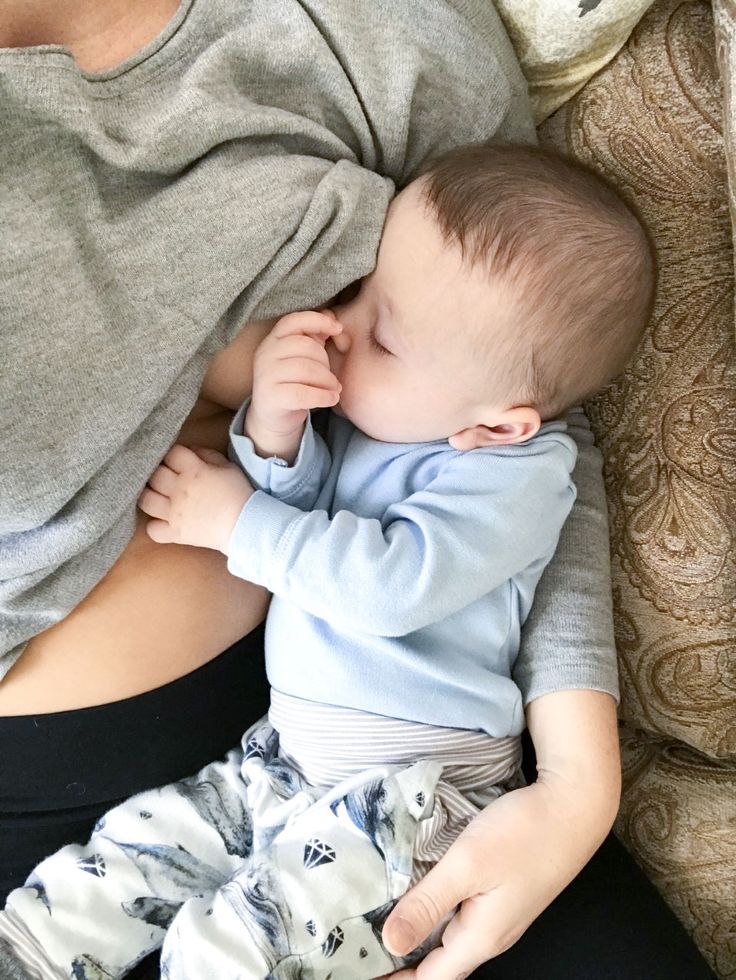 When the baby latch onto the breast and begins sucking rhythmically, it stimulates the mammary gland cells and starts milk production. nine0009 1 It is not for nothing that this time is called the “magic hour”!
When the baby latch onto the breast and begins sucking rhythmically, it stimulates the mammary gland cells and starts milk production. nine0009 1 It is not for nothing that this time is called the “magic hour”!
“Ideally, the baby should be placed on the mother's stomach immediately after birth so that it can immediately attach to the breast. He won't necessarily eat, but he should be able to,” explains Cathy Garbin, an internationally recognized expert on breastfeeding.
“Hold your baby and let him find the breast on his own and put the nipple in his mouth. This is called the breast-seeking reflex. On the Internet you can watch videos that show what this process looks like. If the baby does not latch onto the nipple on its own, the midwife will help to properly attach it to the breast. But for starters, it’s good to give the baby the opportunity to do it on their own. In this case, the optimal position for the mother is reclining. ” nine0003
Don't spend that special first hour of your baby's life weighing and swaddling—or at least wait until he's suckling for the first time.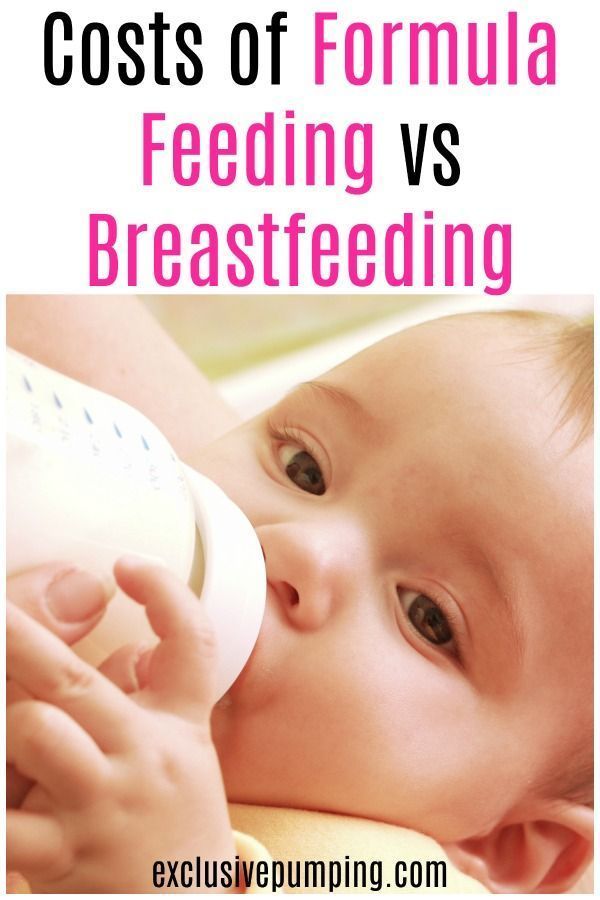 Enjoy hugs and close skin-to-skin contact. This promotes the production of oxytocin, the hormone of love, in you and your baby, and oxytocin plays a key role in the supply of the first breast milk - colostrum. 3
Enjoy hugs and close skin-to-skin contact. This promotes the production of oxytocin, the hormone of love, in you and your baby, and oxytocin plays a key role in the supply of the first breast milk - colostrum. 3
“As soon as the obstetricians were convinced that our son was healthy, the three of us — me, my husband and our baby — were left to give us the opportunity to get to know each other. It was a very special hour - an hour of awkwardness, turbulent emotions and bliss. During this time, I breastfed my son twice, ”recalls Ellie, a mother of two from the UK. nine0003
Did you know that breastfeeding helps to recover after childbirth? This is because oxytocin stimulates uterine contractions. In the first hours after childbirth, this contributes to the natural release of the placenta and reduces blood loss. 4
What if the birth did not go according to plan?
If you had a cesarean section or other complications during childbirth,
You can still make skin-to-skin contact with your baby and breastfeed him in the first hours after birth. nine0003
nine0003
“If you can't hold your baby, have your partner do it for you and make skin-to-skin contact with the baby. This will give the baby a sense of security, care and warmth so that he can hold on until you recover, ”Katie advises.
If the baby is unable to breastfeed, it is advisable to start expressing milk as early as possible and do so as often as possible until the baby is able to feed on its own. “While breastfeeding in the first hours after birth lays an excellent foundation for the future, it is not so important,” Cathy reassures. “It is much more important to start lactation so that in the future, if necessary, you can start breastfeeding.” nine0003
To start milk production, you can express milk manually or use a breast pump that can be given to you at the hospital. 5 And with expressed precious colostrum, it will be possible to feed the child. This is especially important if the baby was born premature or weak, since breast milk is extremely healthy.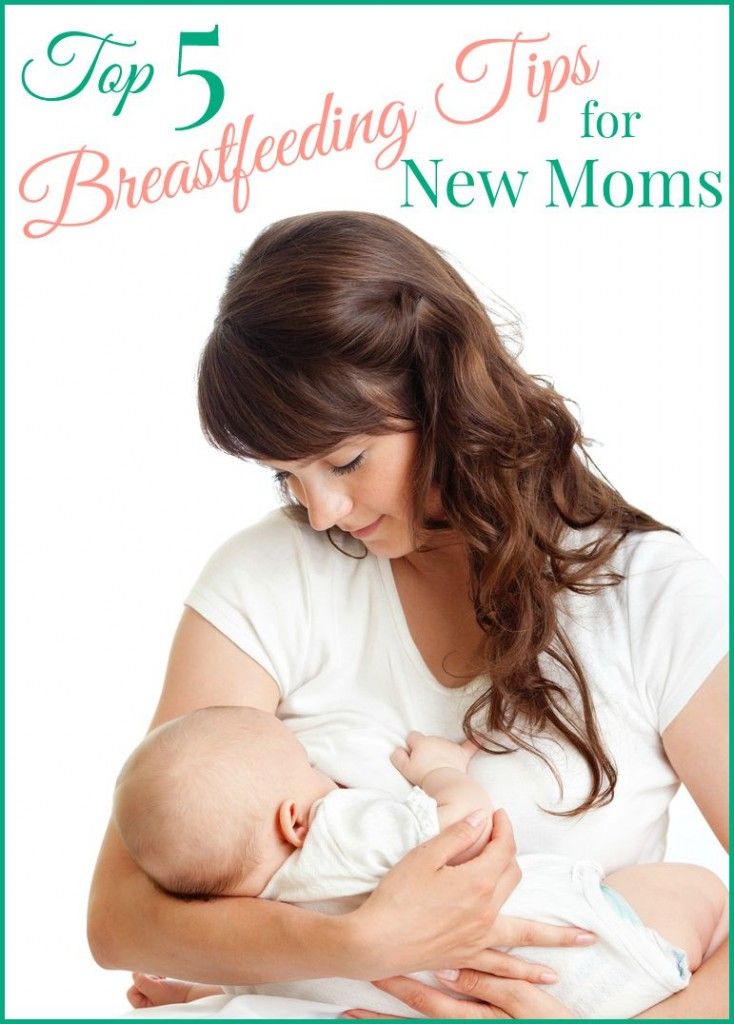
If a baby was born prematurely or has a medical condition and cannot be breastfed immediately, this is no reason not to continue breastfeeding. “I have worked with many new mothers who were unable to breastfeed their baby for the first six weeks due to preterm labor or other reasons. Nevertheless, all of them later successfully switched to breastfeeding,” says Kathy. nine0003
Does the baby latch on correctly?
Correct breastfeeding is essential for successful breastfeeding 6 , as it determines how effectively the baby will suckle milk and hence grow and develop. Latching on the breast incorrectly can cause sore or damaged nipples, so don't hesitate to ask your doctor to check that your baby is properly attached to the breast, even if you are told that everything is fine and you do not see obvious problems - especially while you are in the hospital. nine0003
“While I was in the hospital, I called the doctor at every feed and asked me to check if I was breastfeeding correctly,” says Emma, mother of two from Australia. - There were several cases when it seemed to me that everything seemed to be right, but it was painful to feed, and the doctor helped me take the baby off the breast and attach it correctly. By the time I was discharged, I had already learned to do it confidently.”
- There were several cases when it seemed to me that everything seemed to be right, but it was painful to feed, and the doctor helped me take the baby off the breast and attach it correctly. By the time I was discharged, I had already learned to do it confidently.”
When applying to the breast, point the nipple towards the palate. This will allow the baby to take the nipple and part of the areola under it into their mouth. It will be easier for him to suck if he has both the nipple and part of the areola around in his mouth. nine0009 6
“When a baby latch on properly, it doesn't cause discomfort and it causes a pulling sensation, not pain,” Cathy explains. - The baby's mouth is wide open, the lower lip may be slightly turned outward, and the upper one lies comfortably on the chest. The body language of the child indicates that he is comfortable. There isn't much milk at this early stage, so you probably won't notice your baby swallowing, but he will suckle a lot and nurse frequently. "
How often should a newborn be fed? nine0015
The frequency and duration of breastfeeding in the first week can vary greatly. “The first 24 hours of life are completely different for different children. Someone sleeps a lot (after all, childbirth is tiring!), And someone often eats, says Katie. - Such a variety greatly confuses young mothers. Everyone gives different advice, so it's important to remember that every mother and child is different."
“Colostrum is thicker than mature breast milk and is produced in smaller amounts, but has many benefits. When the baby eats colostrum, he learns to suck, swallow and breathe until milk begins to flow in more volume, ”explains Cathy. nine0003
Milk usually arrives on the second or fourth day after birth. Until this time, the baby is applied to the breast 8-12 times a day (and sometimes more often!), including at night. 7 Feeding may last 10-15 minutes at this stage, or 45 minutes or even an hour, as the baby is just beginning to develop the muscles and coordination needed to suckle effectively.
“At first, the intensity of feeding is very high, often higher than many people realize, and this is shocking to most new mothers,” says Cathy. - Sometimes mom has no time to go to the toilet, take a shower and have a snack. It usually comes as a surprise." nine0003
Camille, a mother from Australia, experienced this. “The first week, Frankie ate every two hours, day and night, and each time it took half an hour to an hour to feed,” she recalls. “My husband and I were completely exhausted!”
Do I need to feed my newborn on a schedule?
The good news is that frequent feeding promotes lactation and stimulates milk production. 7 The more your baby eats, the more milk you will have. Therefore, forget about feeding your newborn on a schedule - this way he will have less chance of feeding. Try to feed your baby when he signals that he is hungry 8 :
- tossing and turning in her sleep;
- opens eyes;
- turns his head if he feels a touch on his cheek;
- sticks out tongue;
- groans;
- licks lips;
- sucks fingers;
- is naughty;
- whimpers;
- is crying.

Crying is the last sign of hunger, so when in doubt, just offer your baby the breast. If he bursts into tears, it will be more difficult to feed him, especially at first, when both of you are just learning how to do it. As your baby grows, he will likely eat less frequently and take less time to feed, so breastfeeding will seem more predictable. nine0003
Does breastfeeding hurt?
You may have heard that breastfeeding is not painful at all, but in fact, in the first days, many new mothers experience discomfort. And this is not at all surprising, given that the nipples are not used to such frequent and strong sucking.
“Breastfeeding can be uncomfortable for the first couple of days – your body and your baby are just getting used to it. If a baby eats for too long and does not latch well, the sensations are almost the same as from unworn new shoes, Cathy compares. Just as tight shoes can rub your feet, improper suckling can damage your nipples. Prevention is always better than cure, so if the pain persists after a few days of feeding, contact a lactation consultant or healthcare professional. ” nine0003
” nine0003
Maria, a mother from Canada, agrees: “Although my son seemed to latch onto the breast well, he damaged his nipples while feeding, and I was in pain. As it turned out, the reason was a shortened frenulum of the tongue. The breastfeeding specialists at our city clinic have been of great help in diagnosis and treatment.”
In addition, you may experience period cramps during the first few days after breastfeeding, especially if this is not your first baby. This is the so-called postpartum pain. The fact is that oxytocin, which is released during breastfeeding, contributes to further contraction of the uterus to restore its normal size. nine0009 4
When milk arrives, the breasts usually become fuller, firmer and larger than before delivery. In some women, the breasts swell, harden and become very sensitive - swelling of the mammary glands occurs. 10 Frequent breastfeeding relieves these symptoms. For more breast care tips, read our article What is Breast Swelling?
How often does the newborn urinate and defecate?
What goes into the body must go back out. Colostrum
Colostrum
has a laxative effect, helping to eliminate meconium - the original feces. It looks a little scary - black and sticky, like tar. 11 But don't worry, it won't always be like this. Breastfed babies usually have a slightly sweet smell of stool.
How many times a day you will need to change diapers and how the contents should look like, see below.
Day one
- Frequency: once or more.
- Colour: greenish black. nine0087
- Texture: sticky like tar.
Day two
- Frequency: twice or more.
- Colour: dark greenish brown.
- Texture: less sticky.
Day three
- Frequency: twice or more.
- Colour: greenish brown to brownish yellow.
- Texture: non-sticky.
Fourth day and then the entire first month
- Frequency: twice or more.
- Color: yellow (feces should turn yellow no later than by the end of the fourth day).
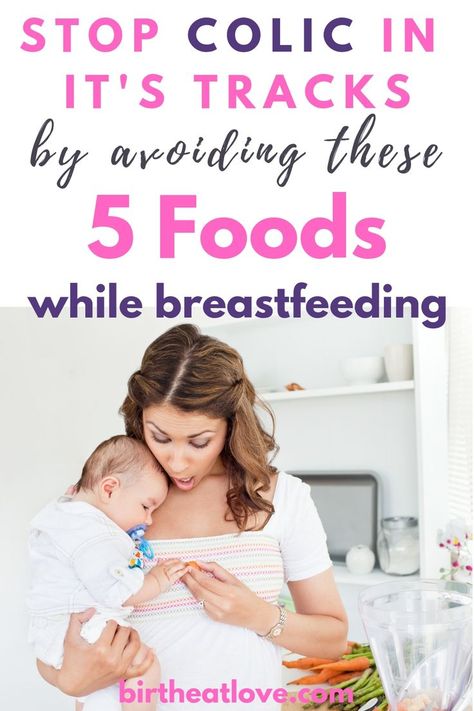
- Texture: grainy (like mustard with grains interspersed). Leaky and watery.
The baby's urine should be light yellow. On average, babies urinate once a day for the first two days. Starting around the third day, the number of wet diapers increases to three, and from the fifth day onwards, diapers have to be changed five times a day or more often. In addition, during the first few days, the weight of wet diapers increases. nine0009 11
Is the baby getting enough breast milk?
Since very little milk is produced at first,
You may feel that this is not enough for your baby. But if you feed your baby on demand, you will produce exactly as much milk as he needs. If you want to keep the process under control, be guided by the frequency of diaper changes above. If your baby soils less diapers, check with your doctor.
“For the first three or four weeks, most babies just eat and sleep. If the child is worried and constantly asks for a breast, you should consult with your doctor, ”Katie recommends.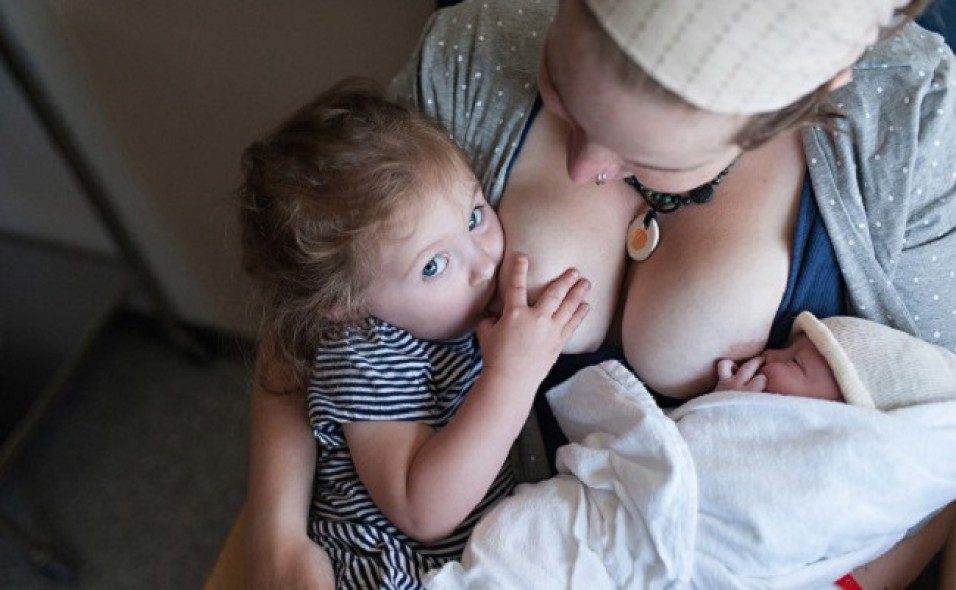 nine0003
nine0003
Sometimes the baby may vomit after feeding. If the vomit is the color of milk, this is not a cause for concern. But if there are orange, red, green, brown or black blotches in it, or the child vomits with a "fountain", consult a doctor. You should also consult a doctor if the baby has a high temperature, the fontanel (soft spot on the head) has sunk, blood is found in the stool, and also if the weight recorded at birth has not recovered within two weeks. 11
But if there are no frightening symptoms and the baby is growing at a normal pace, it means that he has enough milk. Soon you will both get used to breastfeeding and establish a more stable routine.
For the next step in breastfeeding, see Breastfeeding in the First Month: What to Expect.
Literature
1 Pang WW, Hartmann PE. Initiation of human lactation: secretory differentiation and secretory activation. J Mammary Gland Biol Neoplasia 2007;12(4):211-221.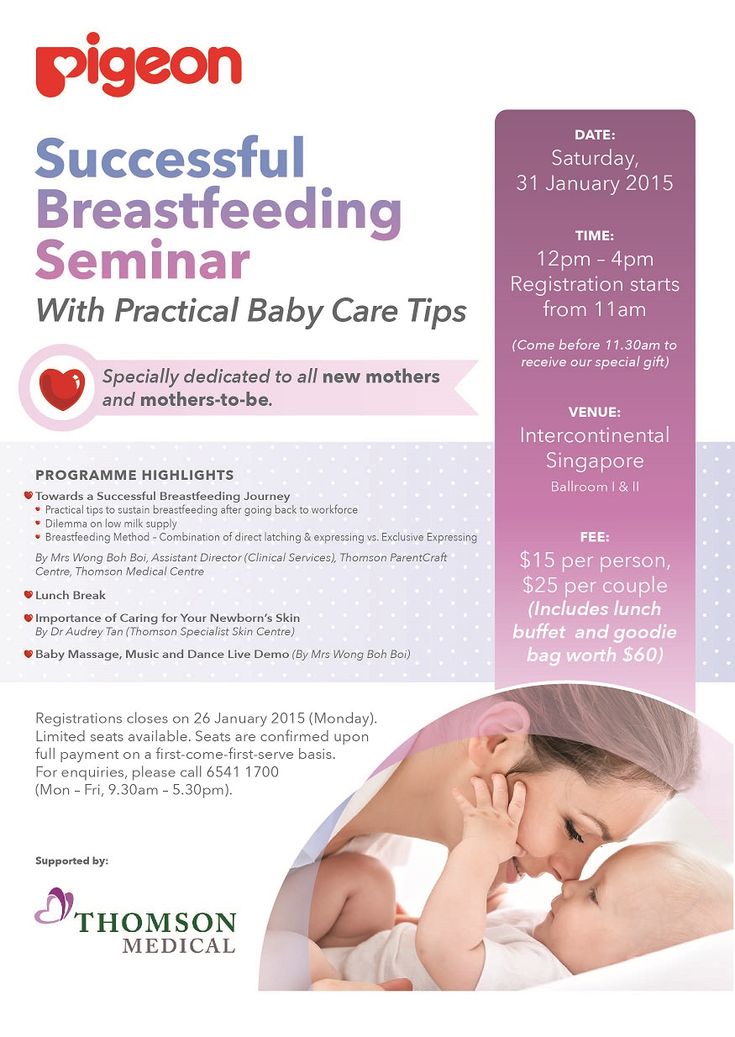 - Pang, W.W., Hartmann, P.I., "Lactation initiation in the lactating mother: secretory differentiation and secretory activation." G Mammary Gland Biol Neoplasia. 2007;12(4):211-221.
- Pang, W.W., Hartmann, P.I., "Lactation initiation in the lactating mother: secretory differentiation and secretory activation." G Mammary Gland Biol Neoplasia. 2007;12(4):211-221.
2 Shashi R et al. Postpartum psychiatric disorders: Early diagnosis and management. Indian J Psychiatry . 2015; 57( Suppl 2): S 216– S 221. - Shashi R. et al., Postnatal mental disorders: early diagnosis and treatment. Indian J Saikiatri. 2015; 57(App 2):S216-S221.
3 Moberg KU, Prime DK. Oxytocin effects in mothers and infants during breastfeeding. Infant . 2013;9(6):201-206. - Moberg K, Prime DK, "The effects of oxytocin on mother and child during breastfeeding." nine0201 Infant. 2013;9(6):201-206.
4 Sobhy SI, Mohame NA. The effect of early initiation of breast feeding on the amount of vaginal blood loss during the fourth stage of labor.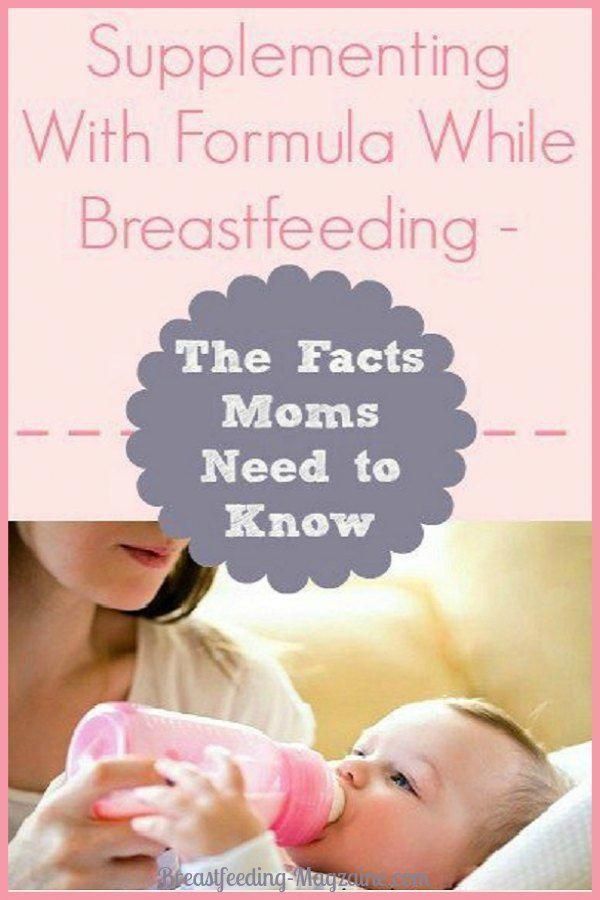 J Egypt Public Health Assoc . 2004;79(1-2):1-12. - Sobhi SI, Moham NA, "Early initiation of breastfeeding and its effect on vaginal bleeding in the fourth stage of labor." nine0201 G Egypt Public Health Assoc. 2004;79(1-2):1-2.
J Egypt Public Health Assoc . 2004;79(1-2):1-12. - Sobhi SI, Moham NA, "Early initiation of breastfeeding and its effect on vaginal bleeding in the fourth stage of labor." nine0201 G Egypt Public Health Assoc. 2004;79(1-2):1-2.
5 Meier PP et al. Which breast pump for which mother: an evidence-based approach to individualizing breast pump technology. J Perinatol . 2016;36(7):493. - Meyer P.P. et al., Breastpump Selection: A Scientific Approach to Customizing Pumping Technology. J Perinatol (Journal of Perinatology). 2016;36(7):493-499.
6 Cadwell K. Latching - On and Suckling of the Healthy Term Neonate: Breastfeeding Assessment. J Midwifery & Women ’ s 2007;52(6):638-642. — Cadwell, K. , "Latching and sucking in healthy newborns: evaluation of breastfeeding." W Midwifery Women Health. 2007;52(6):638-642.
, "Latching and sucking in healthy newborns: evaluation of breastfeeding." W Midwifery Women Health. 2007;52(6):638-642.
7 Kent JC et al. Principles for maintaining or increasing breast milk production. 2012;41(1):114-121. - Kent J.S. et al., "Principles for Maintaining and Increasing Milk Production". J Obstet Ginecol Neoneutal Nurs. 2012;41(1):114-121.
8 Australian Breastfeeding Association [ Internet ]. Feeding cues ; 2017 Sep [ cited 2018 Feb ]. - Australian Breastfeeding Association [Internet], Feed Ready Signals; September 2017 [cited February 2018]
9 Jacobs A et al. S3-guidelines for the treatment of inflammatory breast disease during the lactation period. Geburtshilfe Frauenheilkd . 2013;73(12):1202-1208. - Jacobs A. et al., "Guidelines S -3 for the management of inflammatory breast disease during breastfeeding." Geburtskhilfe und Frauenheilkünde. 2013;73(12):1202-1208.
2013;73(12):1202-1208. - Jacobs A. et al., "Guidelines S -3 for the management of inflammatory breast disease during breastfeeding." Geburtskhilfe und Frauenheilkünde. 2013;73(12):1202-1208.
10 Lawrence RA, Lawrence RM. Breastfeeding: A guide for the medical profession. 7th ed. Maryland Heights MO, USA: Elsevier Mosby; 2010. 1128 p . - Lawrence R.A., Lawrence R.M., "Breastfeeding: A guide for healthcare professionals." Seventh edition. Publisher Maryland Heights , Missouri, USA: Elsevier Mosby; 2010. P. 1128.
Breastfeeding newborns | Medela
Nommsen-Rivers, L.A., Chantry, C.J., Peerson, J.M., Cohen, R.J. & Dewey, K.G. Delayed onset of lactogenesis among first-time mothers is related to maternal obesity and factors associated with ineffective breastfeeding. Am J Clin . Nutr 92, 574–584 (2010).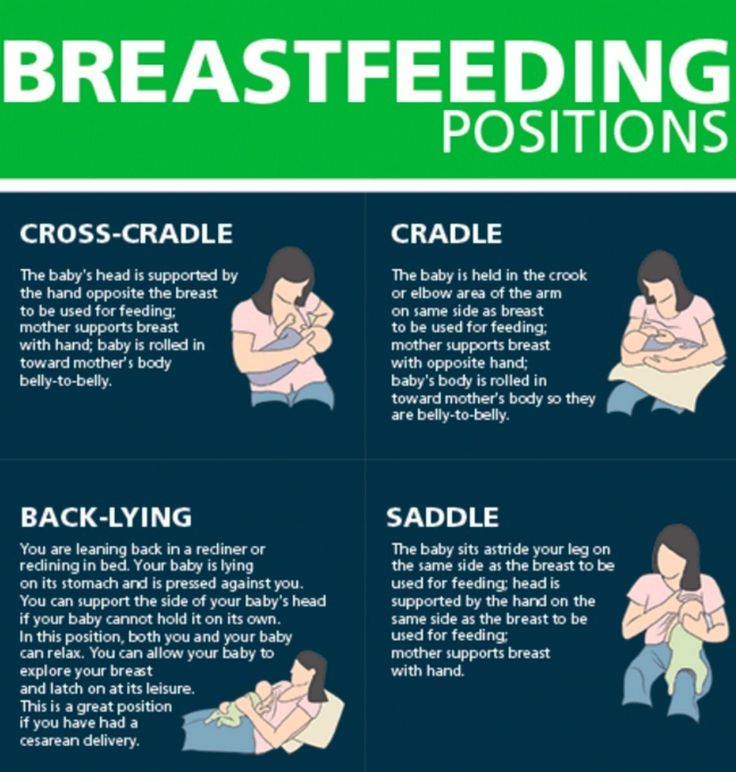 - Nommsen-Rivers L.A., Chantry S.J., Pearson J.M., Cohen R.J., Dewey C.J., "Delayed onset of lactogenesis in primiparous mothers is associated with obesity and factors associated with ineffective breastfeeding." Am J Klin Nutr 92, 574–584 (2010).
- Nommsen-Rivers L.A., Chantry S.J., Pearson J.M., Cohen R.J., Dewey C.J., "Delayed onset of lactogenesis in primiparous mothers is associated with obesity and factors associated with ineffective breastfeeding." Am J Klin Nutr 92, 574–584 (2010).
Berra, S. et al. Correlates of breastfeeding duration in an urban cohort from Argentina. Acta Paediatr . 92, 952–957 (2003). - Berra S. et al., Correlates of duration of breastfeeding among Argentine urban women. Akta Pediatr. 92, 952–957 (2003).
American Academy of Pediatrics and The American College of Obstetricians and Gynecologists. Breastfeeding Handbook for Physicians 2006). - American Academy of Pediatrics and American College of Obstetrics and Gynecology. nine0201 The Doctor's Guide to Breastfeeding, 2006.
Murray, E.K., Ricketts, S. & Dellaport, J. Hospital practices that increase breastfeeding duration: results from a population-based study. Birth 34, 202–211 (2007). - Murray, I.K., Ricketts, S., and Dellaport, J., "Hospital practices that increase breastfeeding duration: Findings from a population-based study." Bers 34, 202-211 (2007).
& Dellaport, J. Hospital practices that increase breastfeeding duration: results from a population-based study. Birth 34, 202–211 (2007). - Murray, I.K., Ricketts, S., and Dellaport, J., "Hospital practices that increase breastfeeding duration: Findings from a population-based study." Bers 34, 202-211 (2007).
Chen, D.C., Nommsen-Rivers, L., Dewey, K.G. & Lonnerdal, B. Stress during labor and delivery and early lactation performance. Am . J . Clin . Nutr . 68, 335–344 (1998). — Chen D.S., Nommsen-Rivers L., Dewey K.G. and Lonnerdahl B., "Stress during childbirth and early onset of lactation." Am J Klin Nutr 68, 335–344 (1998).
Hill, P.D., Aldag, J.C., Chatterton, R.T., Zinaman, M. Comparison of Milk Output Between Mothers of Preterm and Term Infants: The First 6 Weeks After Birth. J Hum Lact 2005, 21(1): 22-30.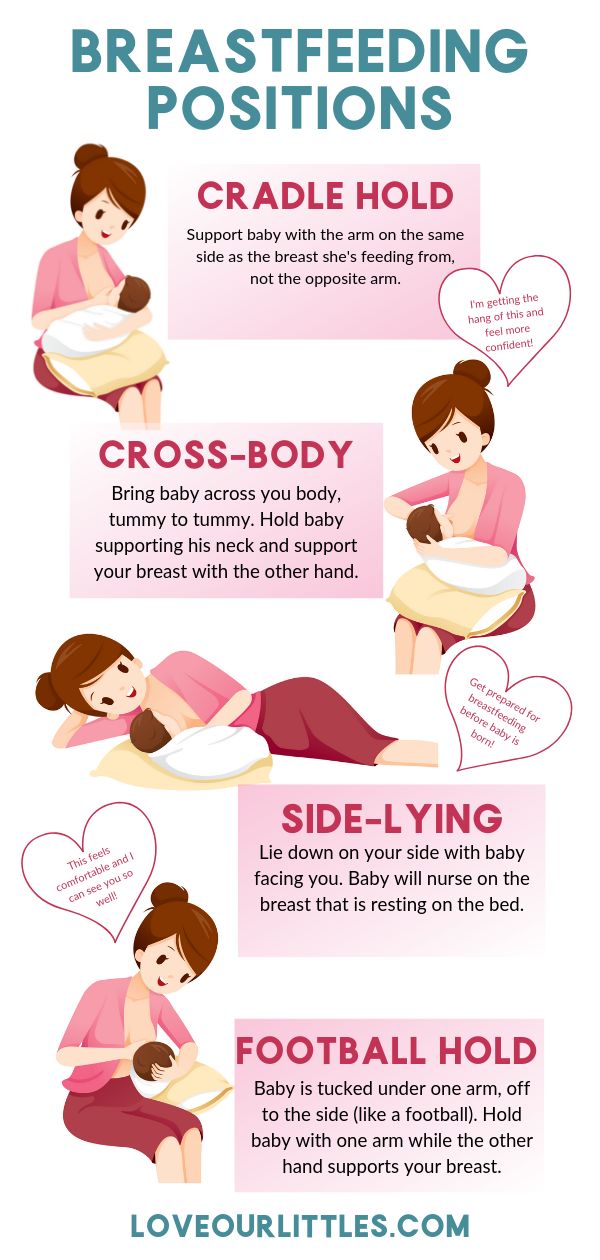 - Hill P.D., Aldag J.S., Chatterton R.T., Zinaman M., "Comparison of the amount of milk in mothers of full-term and premature babies in the first 6 weeks after birth." J Hum Lakt (Journal of the International Association of Lactation Consultants) 2005, 21(1): 22-30.
- Hill P.D., Aldag J.S., Chatterton R.T., Zinaman M., "Comparison of the amount of milk in mothers of full-term and premature babies in the first 6 weeks after birth." J Hum Lakt (Journal of the International Association of Lactation Consultants) 2005, 21(1): 22-30.
Hill, P.D., Aldag, J.C. & Chatterton, R.T. Initiation and frequency of pumping and milk production in mothers of non-nursing preterm infants. J Hum Lact 17, 9–13 (2001). - Hill P.D., Aldag J.S. and Chatterton, R.T., "Onset and frequency of expression and milk production in mothers who have given birth to premature babies and have not breastfed them." J Hum Lakt (Journal of the International Association of Lactation Consultants) 17, 9–13 (2001).
Hopkinson , J ., Schanler & nine0201 Garza , C . MILK Production BY MOTHERS of PREMATURE 200 200 ANFANTS. Pediatrics 81, 815–820 (1988). - Hopkinson, J., Chanler, R., and Harza, S., "Milk production in mothers of preterm infants." Pediatrix (Pediatrics) 81, 815–820 (1988).
Pediatrics 81, 815–820 (1988). - Hopkinson, J., Chanler, R., and Harza, S., "Milk production in mothers of preterm infants." Pediatrix (Pediatrics) 81, 815–820 (1988).
Parker, L.A., Sullivan, S., Krueger, C., Kelechi, T. & Mueller, M. Effect of early breast milk expression on milk volume and timing of lactogenesis stage II among mothers of very low birth weight infants : a pilot study. J Perinatol 32, 205–209 (2012). - Parker L.A., Sullivan S., Kruger S., Kelechi T. and Muller M., "Effect of early pumping on milk supply and timing of second stage lactogenesis in mothers of extremely low birth weight infants: pilot study". nine0201 J Perinatol (Journal of Perinatology) 32, 205–209 (2012).
Parker, L.A., Sullivan, S., Krueger, C., & Mueller, M. Association of timing of initiation of breastmilk expression on milk volume and timing of lactogenesis stage II among mothers of very low-birth-weight infants .


